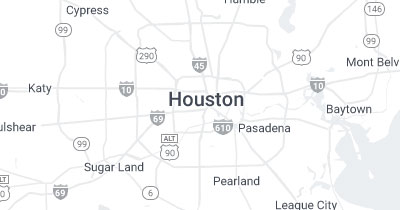Sharp lower back pain: Causes and treatment
- Updated on: 2020-09-26
- Read original article here

Sharp lower back pain is a common source of discomfort for many people. It can cause concern to some people, especially when it appears without a known cause.
Lower back pain is a widespread problem. About 80 percent of adults will experience lower back pain at some point.
In most cases, people develop back pain after doing something strenuous, such as lifting a heavy box, weightlifting, or making a quick twisting or jerking motion involving the back.
The level of the injury and the severity of the pain may affect the type of treatment a person needs. Sometimes, minor cases of sharp lower back resolve by themselves, but some people may require a visit to the doctor and physical therapy to help strengthen the muscles and prevent future injury.
Keep reading to learn more about some different causes of sharp lower back pain and how to treat them.
Many different muscles, bones, and connective tissues meet in the back. This means that individuals may experience a wide variety of symptoms in the lower back. Small variations in the way a person experiences pain may help a doctor identify the source of the pain.
A muscle strain might happen as the result of a simple action, such as bending down to pick something up or twisting while holding something heavy.
A person may experience a sharp pain that causes a burning or tingling sensation or a radiating ache. They may also feel they have a stiff back, aching muscles, and pain that gets worse if they twist or move the back.
Muscle strains are generally minor injuries and often require little or no treatment.
However, these types of injury generally respond well to rest, which means avoiding physical activity for a few days while the muscles heal. While a muscle strain is healing, avoid sitting in an upright position, such as at the desk, as this may engage the injured muscles.
However, after a few days of rest, physical activity can help strengthen the muscles. A review in Asian Spine Journal,notes that both general exercise and exercises specific to the back can help reduce lower back pain. Gentle activities, such as swimming or riding a bike, may help strengthen the muscles and keep the body healthy.
Also, working with a physical therapist to create a gentle workout routine can help strengthen the affected muscles in the back.
Hot or cold packs may help treat symptoms such as swelling and pain. Alternate between 20 minutes of cold and 20 minutes of rest a few times each day for the first few days. Afterward, using a heat pack may help relax the tense muscles and promote circulation.
Over-the-counter (OTC) pain relievers, such as ibuprofen (Advil) or acetaminophen (Tylenol), may also help control symptoms. However, always follow the dosage recommendations and do not use them to work through the pain.
The sciatic nerve is a long nerve that runs from the back to the legs. Sciatica, which refers to pain in this nerve, occurs due to pressure on the sciatic nerve. This pressure can be due to an injury, such as a herniated disk, or more long-term issues, such as incorrect posture.
Sciatica is relatively common in adults, with between 10–40% of people experiencing it at some point during their lives. It is important not to generalize back pain or assume that any lower back pain is sciatica. Anyone who suspects they have sciatica should see a doctor.
Pain from sciatica may build up over time or come on all at once. It can also vary between a dull ache and an excruciating tearing or burning feeling.
Many describe the pain as warm or sharp, and it typically radiates from one side of the lower back down to the hip or buttocks.
Working with a physical therapist to help strengthen the back muscles might help alleviate pain from sciatica. Practicing proper posture, especially while seated, might gradually strengthen the back and prevent extra pressure on the nerve as well.
As a person ages, the structures in the body age with them. The rubbery disks that cushion the spine can begin to wear down, often causing pain and stiffness in the back.
Some OTC anti-inflammatory medications and workouts may help relieve pressure on the disks.
A slipped, or herniated, disk occurs when one of the spinal disks ruptures. This can put pressure on the nerves, which causes intense, sharp pain.
If the disk puts pressure on these nerves, a person might experience symptoms such as:
Most cases respond well to mild treatment, such as rest and physical therapy. Surgery may be an option in more severe cases.
Read about some safe exercises for treating a herniated disk.
Forceful injuries from impact sports, car accidents, and falls may all cause sudden back pain. Anyone who experiences back pain after such an event should visit the doctor right away because the pain might be a sign of something more serious, such as a fractured bone in the back.
Other signs of serious injury in the back can include:
Anyone experiencing these symptoms should see a doctor.
Pain in the lower back may be due to an injury but may also be a sign of a chronic issue, such as:
In females, lower back pain might signal a range of conditions, such as ovarian cysts, uterine fibroids, or ovarian cancer.





